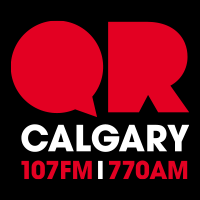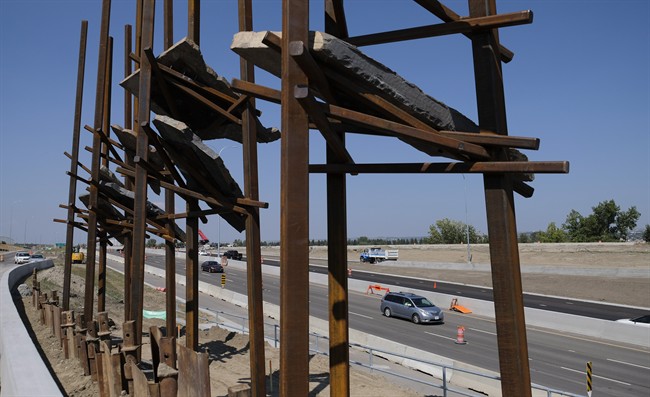A Calgary art appraiser said Thursday the city should consider installing sculpture parks in areas like Prince’s Island Park rather than tie new art installations to major infrastructure projects, like in the case of the Bowfort Towers.

Frank Hall, owner of Hall’s Appraisals and Estate Sales, said the city’s public art policy has meant that some pieces are going up in areas that aren’t likely to attract much foot traffic, such as at the Bonnybrook Wastewater Treatment Plant.
“Tourists are not likely to go to the water treatment plant, that’s not a top priority,” he said.
LISTEN: Councillor Shane Keating says there needs to be more public engagement when it comes to public art
Hall said New Orleans is a city Calgary should take inspiration from, pointing to the sculpture garden at the city’s museum of art as an example.
“It’s sensational,” he said. “I thought we would need something like that on Prince’s Island Park, or where tourists are going to go, and where the public spends a lot of time.”
LISTEN: University of Calgary professor weighs in on public art policy debate in Calgary
Councillor Shane Keating agrees “location is key” when it comes to public art.
“If you’re looking at the Bowfort Towers, for example, and you want to talk about history and you want to talk about the rocks that are there that have symbols embedded in them and things like this, and you’re driving at 100 kilometres – it’s lost.”
Keating said Calgarians should have more input into the public art process, including which pieces are selected and where they are installed.
LISTEN: Frank Hall argues for sculpture parks in Calgary
“We must follow what I consider best practices in the architecture world,” he said, adding that the city could create a shortlist of three to five proposals it wants to further explore. Those companies would be given a nominal fee to create scale models, 3D projects or sketches, which would be unveiled to the public.
Keating said it should be the public that eventually decides which proposal the city moves forward with.
“They should have some idea beforehand of what they’re actually getting,” he said.
Dr. Patrick Finn, associate professor at the University of Calgary’s school of creative and performing arts and computational media design, disagrees.
He said Thursday that it should be experts who decide what art populates the city.
“We may not all understand each of these different art forms, but I think we would all agree that what we would like is for the people making the decisions on these bids to be people that are experts in the area of that particular art form,” he said.
LISTEN: Artist Jeff Deboer offers his thoughts on Calgary’s public art program
Hall said public art can enhance your experience of a city, but, when it’s paid for by taxpayers it needs to be widely appreciated and understood. He said Calgary has failed at this too many times.
He said the tendering process in Calgary is “too narrow, it’s almost secretive.”
“These things get decided by the artist and a small number of people and we don’t see it until it’s installed and it creates a lot of controversy.”
But Finn says art is supposed to foster discussion.
“Art is about challenging your creative muscles and so, if you’re working out your creative muscle… it’s going to cause a little discomfort as we begin to explore what this is saying to us,” he added.
WATCH BELOW: Rejected Siksika artist weighs in on controversial Bowfort Towers sculpture

City set to review public art policy
Earlier this month, the city suspended its public art policy following widespread criticism of the Bowfort Towers and the so-called blue ring.
Together, the two projects have cost taxpayers about $1 million.
Councillors voted unanimously in favour of a review of the public art policy after a motion was brought forward by Shane Keating and Sean Chu.
The suspension applies to all new art projects. However, the 54 projects already underway won’t be impacted.
The controversy around Bowfort Towers
The installation located at the new Bowfort Road and Trans-Canada Highway interchange has been the topic of heated debate since it was first unveiled in early August.
First Nations artists protested the artwork after the city indicated it was “aligned with Blackfoot cultural symbolism,” claiming it resembled Indigenous burial towers.
Mayor Naheed Nenshi and the Treaty 7 chiefs eventually released a statement meant to “clear up misconceptions” about the Bowfort Towers.
They said the New York-based artist Del Geist consulted with traditional knowledge keepers, but that the artwork was never meant to be Indigenous or inspired by Indigenous themes.







Comments